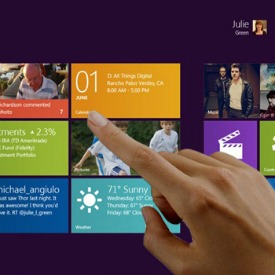Ransomware Could Hold Your Data Hostage
Posted by aonenetworks On February 23, 2015 Malware threats have exploded in recent months targeting not just computers, but also your smart phones and tablets. Now, a new threat has emerged that allows criminals to encrypt devices until a ransom is paid. This ransom is usually demanded in bitcoins rather than in than U.S. currency because it cannot be traced.
Malware threats have exploded in recent months targeting not just computers, but also your smart phones and tablets. Now, a new threat has emerged that allows criminals to encrypt devices until a ransom is paid. This ransom is usually demanded in bitcoins rather than in than U.S. currency because it cannot be traced.
How Does Ransomware Spread?
Ransomware is typically spread through more traditional means such as phishing emails. These emails try to convince you to open their attachments or direct you to a bogus website designed to download the malware onto your device. Some versions of this new malware have even been known to spread through various instant messaging platforms on the Internet as well.
Targets of Ransomware
Hackers tend to target small businesses instead of individuals or large companies. Large companies often have better security practices and backups in place in case of a malware infection making the chances of a pay-out much lower. Consumers don’t necessarily have the resources for payment. Small businesses, however, offer the perfect balance between resources and Internet hygiene to be the perfect target.
Does Paying the Ransom Work?
There is no guarantee that you will regain access to an infected device just because you paid the ransom. In many cases, the device is left the way it is and you will have spent money for nothing. In some cases, however, hackers do follow through and release the infected device once the ransom is paid. Typically, a hacker holds your data hostage for $200 to $2,000, but there have been cases documented in which users paid upwards of $10,000 just to get their data back.
Why Pay At All?
With the risk of not getting your data, why would you bother with the ransom? Depending on the device, you may desperately need this data, and despite the risk, paying may seem like the best choice. For example, say your computer that housed all the financial data for your small business in software such as Quickbooks became infected. What would you do? Some business owners simply pay the ransom in order to get their important files back.
How to Protect Your Systems
If you want to protect the systems at your business so you don’t become the next victim of ransomware, there are a few steps you can take. Be sure you educate your employees on what they can and cannot open and what sites they can visit. On each computer, run up-to-date antivirus and anti-malware software to help shield you from these types of threats. It is also a good idea to begin backing up all your important files for your business on a regular basis. That way, if one of your computers does become infected, you can avoid the ransom and simply wipe the machine and reload all your important business files once the wipe is complete.
Ransomware is a rapidly growing problem that should be taken seriously by all businesses regardless of size. Currently, there is no simple solution to protecting yourself from these threats. You must rely on traditional security measures to shield yourself from this danger.





